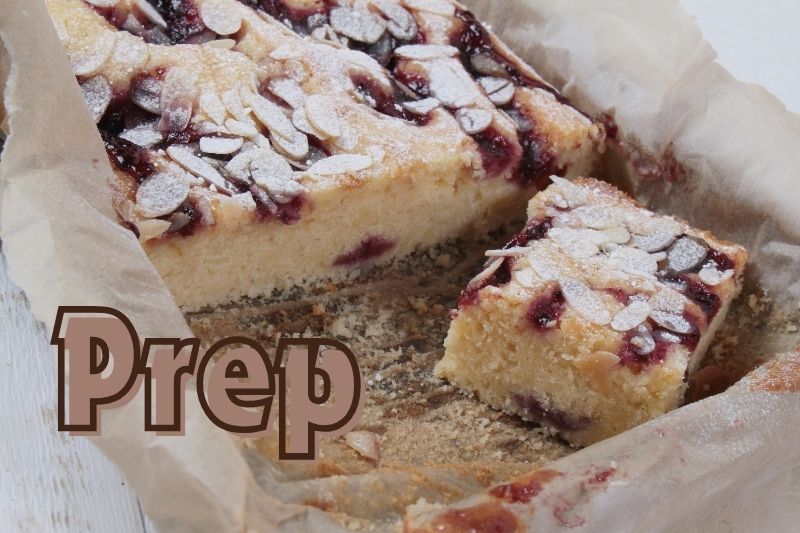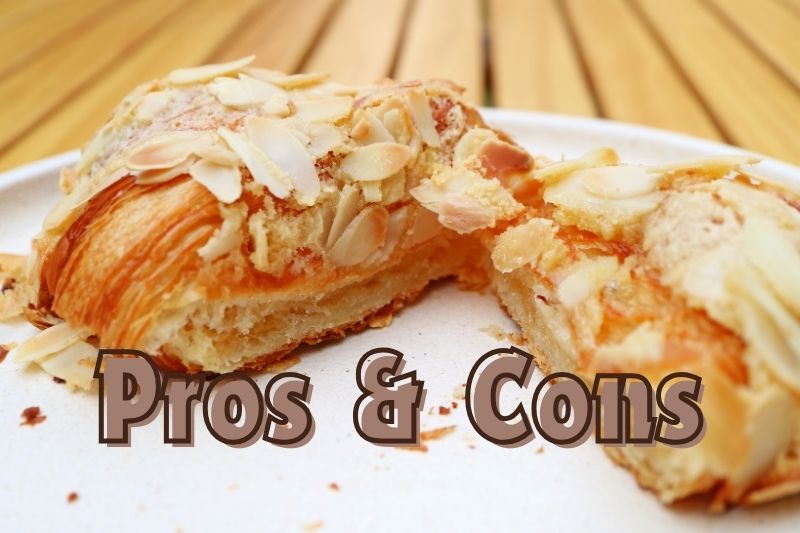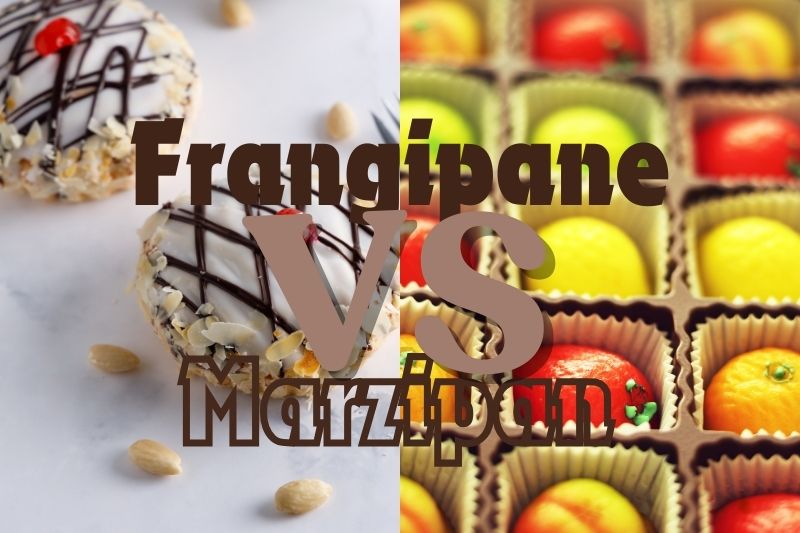Welcome to the delectable universe of almond-based confectionery, where two titans reign supreme: frangipane and marzipan. If you’ve ever found yourself tangled in the sugary labyrinth of these almond delights, you’re not alone.
Both frangipane and marzipan have their own distinct charm and applications, making them favorites among bakers and pastry enthusiasts. But which one is truly better? Let’s dive into the fascinating details of these sweet contenders and see how they stack up against each other.
Origins and History

Frangipane
Frangipane, a luxurious almond cream, traces its origins back to Renaissance Italy. Named after the Italian nobleman Marquis Muzio Frangipane, who invented an almond-scented glove perfume, this rich filling eventually found its way into French patisseries. By the 17th century, frangipane had become a beloved filling in various pastries, including the iconic Galette des Rois, a traditional French cake served during Epiphany.
Marzipan
Marzipan, on the other hand, boasts a rich and varied history that spans several cultures. Believed to have originated in Persia (modern-day Iran), marzipan made its way to Europe via trade routes. By the Middle Ages, it had become a staple in royal courts and monastic kitchens across the continent. Known for its smooth texture and malleability, marzipan is often used to craft intricate edible sculptures and decorations.
Ingredients and Preparation

Frangipane
The heart of frangipane lies in its simplicity and richness. The primary ingredients include:
- Almond flour or ground almonds: Provides the creamy texture and nutty flavor.
- Butter: Adds richness and smoothness.
- Sugar: Sweetens the mixture.
- Eggs: Bind the ingredients and add moisture.
- Flour: Stabilizes the mixture and gives it structure.
- Flavorings: Vanilla extract or almond extract to enhance the almond flavor.
To prepare frangipane, you’ll typically start by creaming the butter and sugar together until light and fluffy. Then, you’ll add the eggs one at a time, followed by the almond flour and a small amount of regular flour. The result is a smooth, creamy mixture that’s ready to be spread into tarts, pastries, and other baked goods.
Marzipan
Marzipan’s ingredients are straightforward yet yield a distinctly different product from frangipane. The basic components are:
- Almond paste or ground almonds: The foundation of marzipan, giving it its signature texture and taste.
- Powdered sugar: Sweetens the almond paste and helps achieve a smooth, pliable consistency.
- Egg white or syrup: Binds the ingredients together.
- Flavorings: Typically almond extract for an intensified almond flavor.
Making marzipan involves mixing the almond paste and powdered sugar, then adding the egg white or syrup until the mixture comes together in a smooth, pliable dough. This dough can be rolled, shaped, and molded into various forms or used as a layer in cakes and pastries.
Texture and Taste

Frangipane
Frangipane’s texture is creamy and luscious, with a slight graininess from the ground almonds. When baked, it puffs up and sets into a tender, cake-like consistency that melds beautifully with the flaky pastry or tart crust it’s paired with. The taste is rich and buttery, with a pronounced almond flavor that’s complemented by hints of vanilla or other extracts used.
Marzipan
Marzipan, in contrast, has a smooth and dense texture, making it ideal for molding and shaping. Its taste is intensely sweet, with a strong almond flavor that can sometimes have a slightly bitter undertone, especially if bitter almonds are used in its preparation. This sweet, nutty flavor makes marzipan a favorite for candy-making and cake decorating.
Culinary Uses

Frangipane
Frangipane’s primary role is as a filling for various pastries and desserts. Some popular uses include:
- Tarts and Pies: Frangipane is often spread into tart shells and topped with fruit, such as pears, apples, or cherries, before baking.
- Pastries: It’s used in croissants and Danish pastries to add a rich, almond-flavored filling.
- Cakes: Incorporated into layered cakes or used as a filling in specialty cakes like the Galette des Rois.
Marzipan
Marzipan’s versatility and moldability make it suitable for a wide range of applications, such as:
- Candy and Confections: Shaped into fruits, animals, or other figures, marzipan is a popular choice for edible decorations.
- Cakes: Used as a layer under fondant to give cakes a smooth finish or crafted into decorative elements.
- Cookies and Pastries: Added to cookie dough or used as a filling in various pastries.
- Chocolate Coatings: Marzipan can be dipped in chocolate to create delicious almond-flavored treats.
Pros and Cons

Frangipane
Pros:
- Rich and Creamy: Adds a luxurious texture and flavor to pastries.
- Versatile: Works well with a variety of fruits and baked goods.
- Easy to Make: Requires simple ingredients and straightforward preparation.
Cons:
- Requires Baking: Needs to be baked to achieve the right texture, limiting its use to baked goods.
- Short Shelf Life: Doesn’t keep as long as marzipan and needs to be refrigerated.
Marzipan
Pros:
- Moldable: Can be shaped into intricate decorations and figures.
- No Baking Required: Ready to use as soon as it’s made.
- Long Shelf Life: Keeps well when stored properly, making it ideal for advance preparations.
Cons:
- Very Sweet: Its intense sweetness may not be to everyone’s liking.
- Texture: The dense, chewy texture might not appeal to those who prefer lighter confections.
Recipes to Try

Classic Frangipane Tart
Ingredients:
- 1 pre-baked tart shell
- 1/2 cup unsalted butter, softened
- 1/2 cup sugar
- 2 large eggs
- 1 cup almond flour
- 2 tablespoons all-purpose flour
- 1 teaspoon almond extract
- Sliced fruit (pears, apples, or berries)
Instructions:
- Preheat your oven to 350°F (175°C).
- In a mixing bowl, cream the butter and sugar together until light and fluffy.
- Add the eggs one at a time, mixing well after each addition.
- Stir in the almond flour, all-purpose flour, and almond extract until well combined.
- Spread the frangipane mixture into the pre-baked tart shell.
- Arrange the sliced fruit on top.
- Bake for 30-35 minutes, or until the frangipane is set and golden brown.
- Let cool before serving.
Marzipan Fruits
Ingredients:
- 1 cup almond paste
- 1 cup powdered sugar
- 1 tablespoon corn syrup or egg white
- Food coloring
- Edible glitter (optional)
Instructions:
- In a mixing bowl, combine the almond paste and powdered sugar.
- Add the corn syrup or egg white and mix until the mixture comes together in a smooth dough.
- Divide the dough into portions and color each with a few drops of food coloring.
- Shape the colored marzipan
